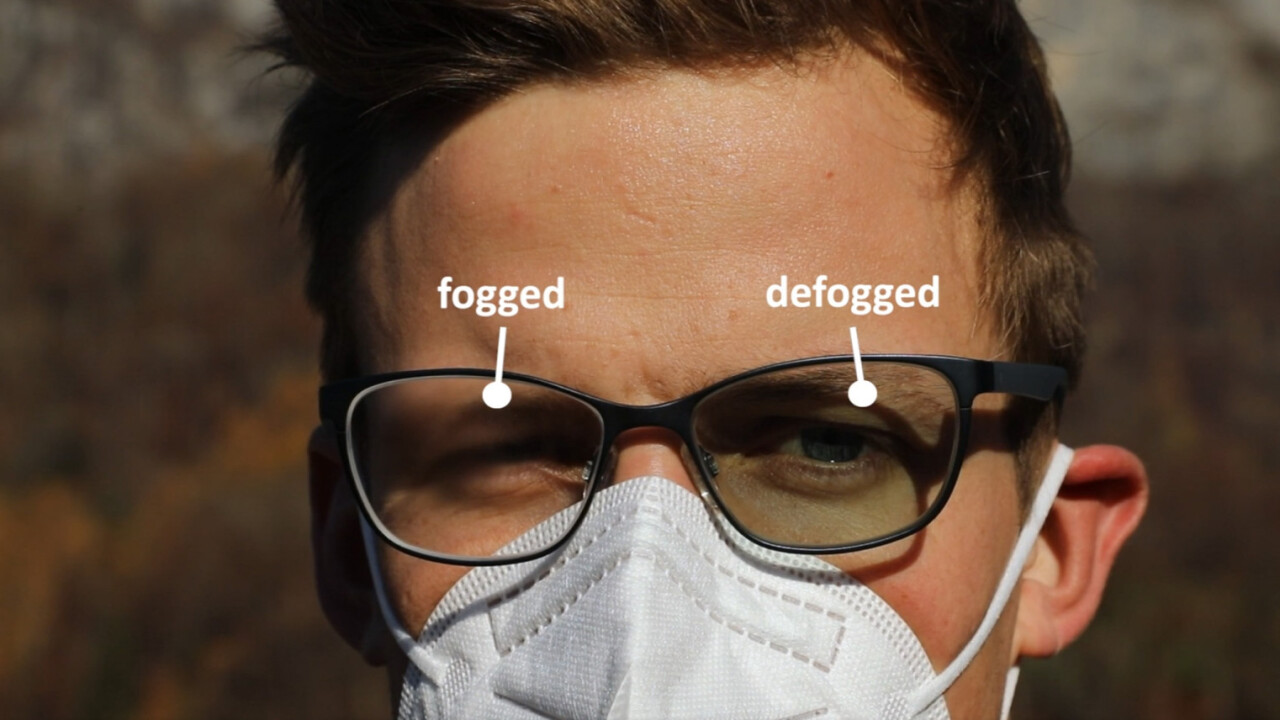
Scientists at ETH Zurich have developed a special coating that prevents the lenses in glasses from fogging up. Apparently, not all heroes wear capes.
This has been a problem since the advent of optical lenses, but it’s fair to say it reached a peak during the pandemic when everyone wearing glasses found out the hard way that most face masks vent your breath up towards your eyes. You’d think someone would have fixed this by now, but it’s harder than you might guess.
The difficulty of the problem is evident by the lack of current solutions. You can wipe your glasses off when they fog up or… well, that’s pretty much it. There are anti-fog sprays and special lens coatings that help, but those only minimize the problem.
You don’t have to be a physicist to understand that the best solution would be heat. Glasses fog when warm vapor comes into contact with their cooler lenses. This temperature fluctuation causes the vapor to turn into moisture, and your glasses turn foggy because they’re wet.
Unfortunately, heating up glasses isn’t a simple task. Using traditional methods, you’d have to find a transparent material that can be heated externally, develop a power source for the material, and make sure there’s no danger of overheating the lenses or heating the frames. That’s a pretty tall order, especially when you consider that any added bulk or weight will increase the wearer’s discomfort.
The ETH Zurich team got around these engineering problems by taking a different approach. They developed a special gold coating that uses solar energy to produce heat. It doesn’t require a battery or wires or any other components aside from the coating itself.
The way it works involves placing tiny clusters of gold in between ultrathin layers of titanium oxide. Gold makes a fantastic heat conductor, and the titanium oxide layers amplify the metal’s retention just enough to make it perfectly suited for warming up glass and similar surfaces.
The whole thing is only 10 nanometers thick (the processing size for some microchips) and can be used with other coatings — so it should work with transition lenses, and for use in car windshields, for example. In fact, the scientists are bent on testing the coating on other surfaces such as windows and mirrors.
It’ll also be interesting to see how this coating could be applied to other optics such as sensors and lasers. The applications for this coating could be endless, especially as the scientists insist that it’s not as expensive as one might think due to the incredibly small amount of gold needed to create the coating.
It’s unclear exactly how much heat could be generated using this technique, but the researchers claim it can heat up the surface by as much as 8 degrees Celsius. That’s certainly enough to keep vapor from fogging up your lenses under common circumstances. But it’s not quite enough to produce electricity in any usable amount.
This probably won’t solve the world’s energy crisis, but it certainly has the potential to make life easier for the billions of us who wear glasses.
Get the TNW newsletter
Get the most important tech news in your inbox each week.




